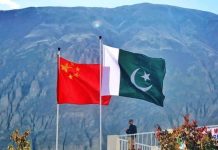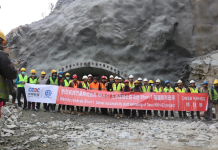DM Monitoring
CHANGSHA: This winter is particularly warm for Zhang Xiaoyuan after he bought three air conditioners for his rural abode in central China.
Heating was once a big challenge for Zhang, who lives in a 200-square-meter two-story house in Jiangxing Village, Hunan Province.
“In previous winters when power consumption peaked, the voltage was so unstable that the light bulbs would go on and off. Simultaneously turning on several air conditioners would definitely cause the circuit breakers to trip,” he said. So when his village upgraded the power grid late last year, Zhang said all villagers, including his family, bought new home appliances to capitalize on the more stable power supply.
Thanks to upgraded grids and improved incomes amid China’s poverty alleviation drive, more rural families like Zhang’s are adding electrical appliances to their shopping lists. According to the National Energy Administration, China’s rural electrification rate reached 18 percent last year, 7 percentage points higher than in 2012. The number of air conditioners in rural homes was more than twice that of 2012, while diesel-fueled motorcycles and farm vehicles are being replaced by electric vehicles. The ensuing surge in rural power consumption, officials said, was one of the major causes of the country’s current power shortage, along with the onslaught of cold waves and the post-coronavirus economic recovery.
Since late last year, several Chinese provinces and regions including Hunan, Jiangxi, Zhejiang, Guangdong and Inner Mongolia have issued power rationing notices. While a rebound in the industrial sector figures prominently in Zhejiang and Guangdong, in provinces like Hunan, power suppliers are struggling to cope with the surging demand from rural households. According to the State Grid Hunan branch, rural families are the fastest-growing electricity consumers in Hunan, accounting for 14.8 percent of the province’s power consumption in 2020, up from 13.5 percent in 2018.
“The booming rural economy, the rising living standards, and the use of more home appliances have brought a continuous rise in the power load in rural areas,” said Wen Ming with the Economics and Technical Research Institute of the State Grid Hunan Electric Power Company.






